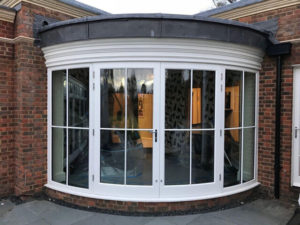 Hardwood specification.
Hardwood specification.
General.
In the building and construction industry the two most common hardwoods used are Oak and Chestnut.
For exposed timber structures and for internal components such as doors and trim work, Oak is selected. While Chestnut is used for areas such as exterior cladding.
Both of these wood species contain Tannin (tannic acid) and when use under dry conditions present no problems. However, if the timber surface comes in contact with moisture the acid can be activated and comes to the surface.
If the woods have been painted with a conventional alkyd oil paint then tannin bleeding can occur causing the paint coating to yellow.
See: Yellowing in Problems and Solutions.
To prevent this the following generic specification can be considered.
Preparation.
The bare timber should be sanded down with suitable grade sandpaper to a smooth finish. Any hard surface resin from wood knots or sap residue should be removed by the most appropriate means.
Remove all other surface contaminates as required leaving the surface clean and dry.
Areas around wood knots and sap residue should be wiped over with methylated spirit and allowed to dry.
Priming
Priming coats for hardwood vary from different manufactures which included acrylic resin, spirit and alkyd based aluminum primers.
Undercoat and finishes.
For compatibility it is necessary to follow the selected paint manufacturers instruction.
Note:
Manufactures may recommend using a heat source to draw the resin to the surface to remove the resin but if the resin pocket is deep this may not be successful.
Cutting out knots or replacing a section of the timber may be required. See: Resin Exudation in Problems and Remedies